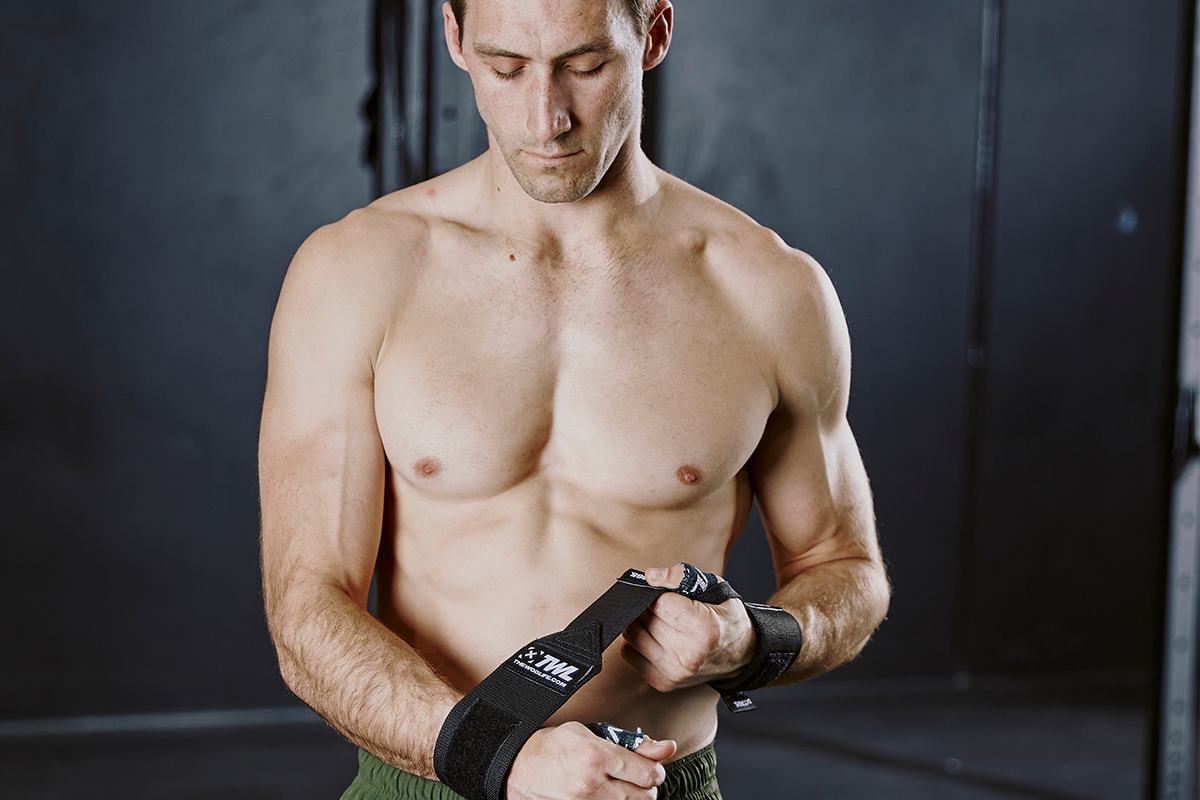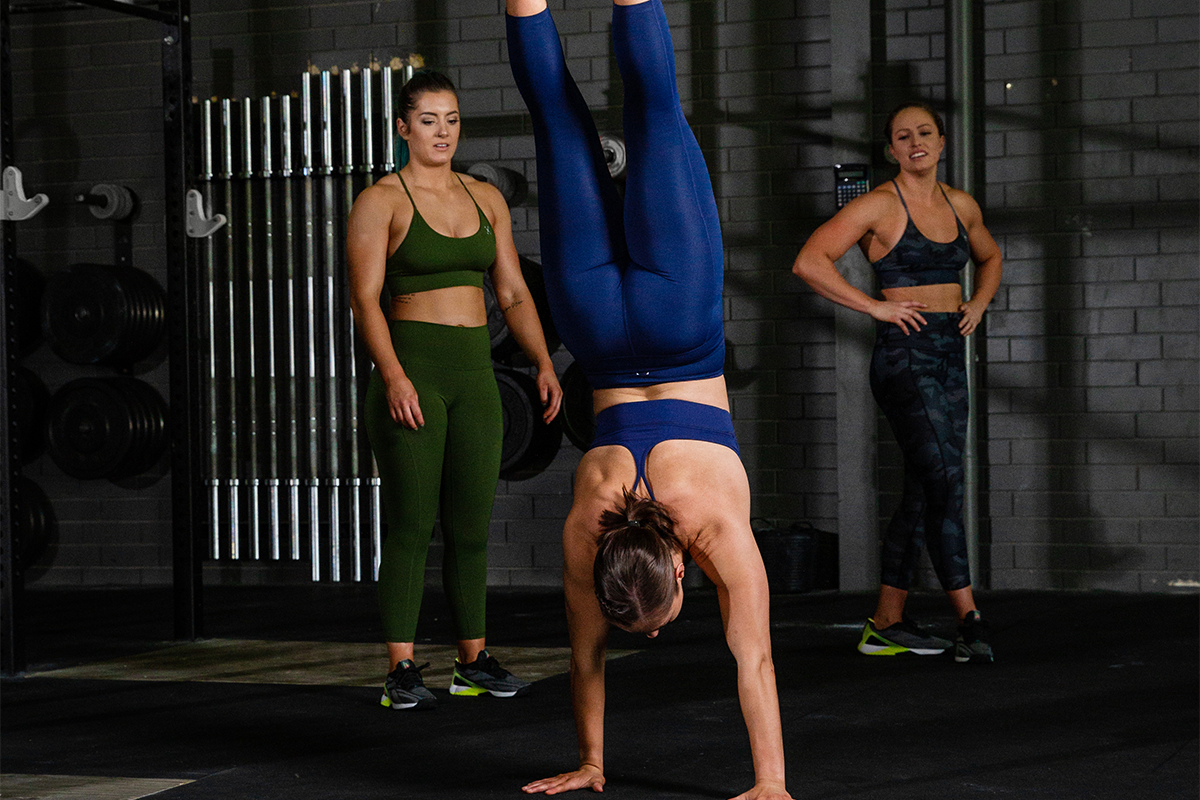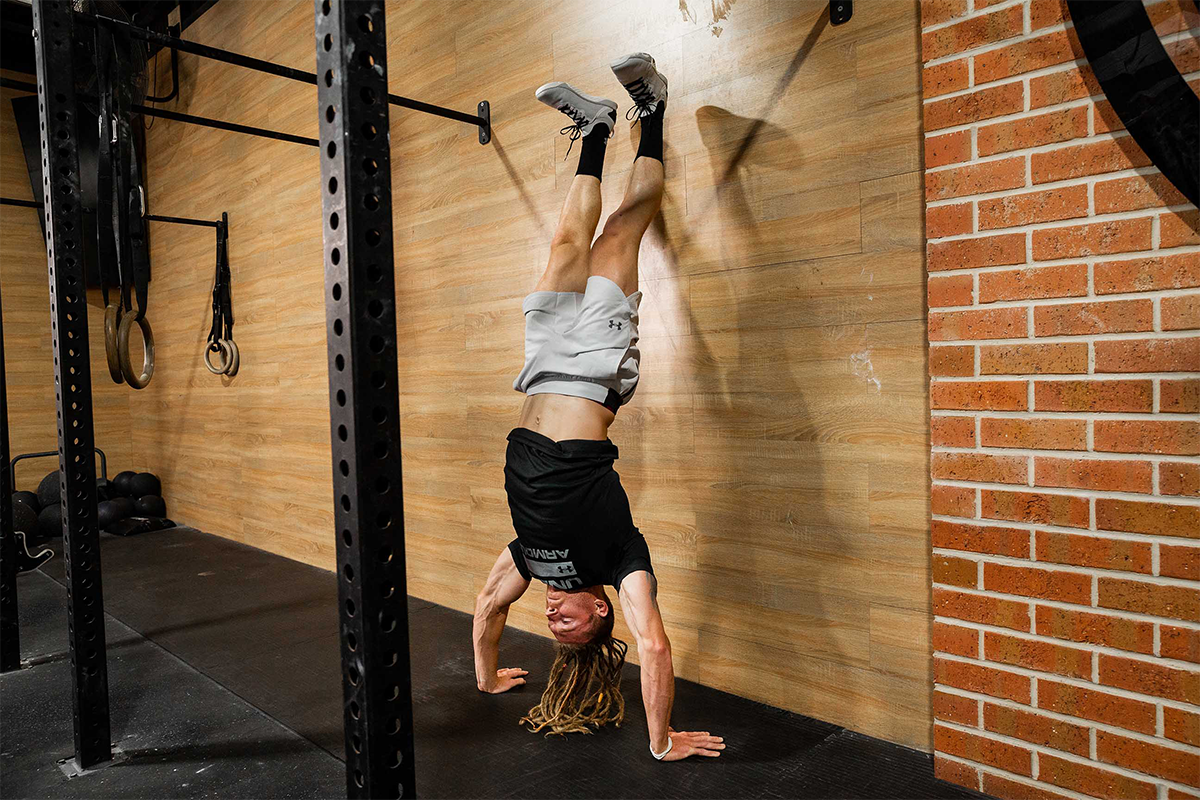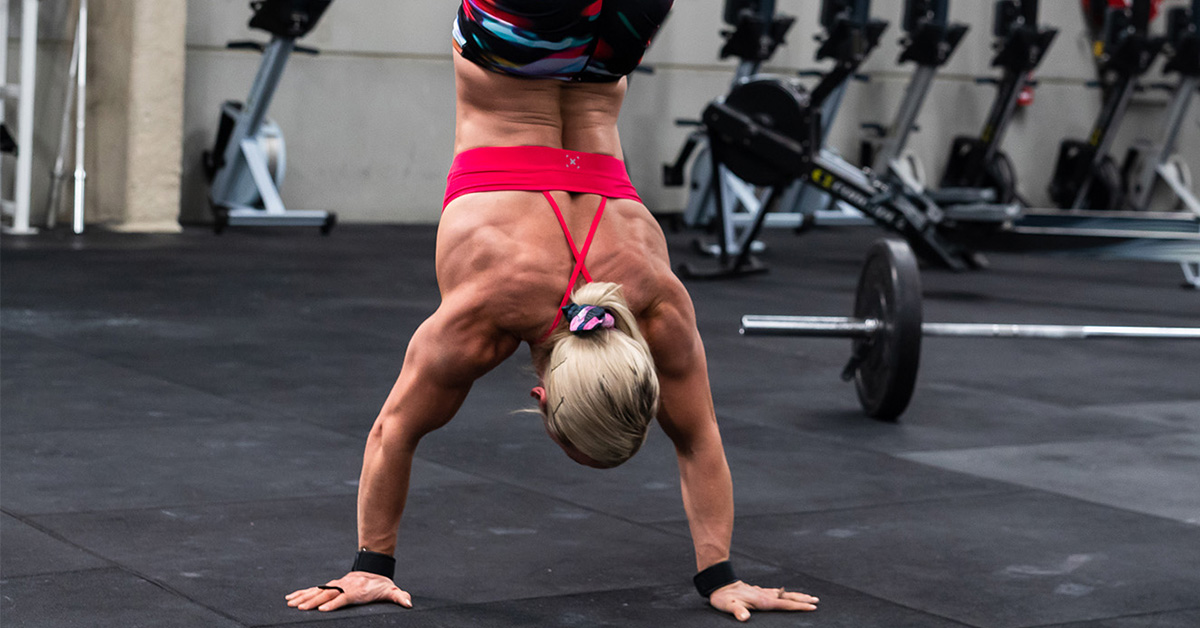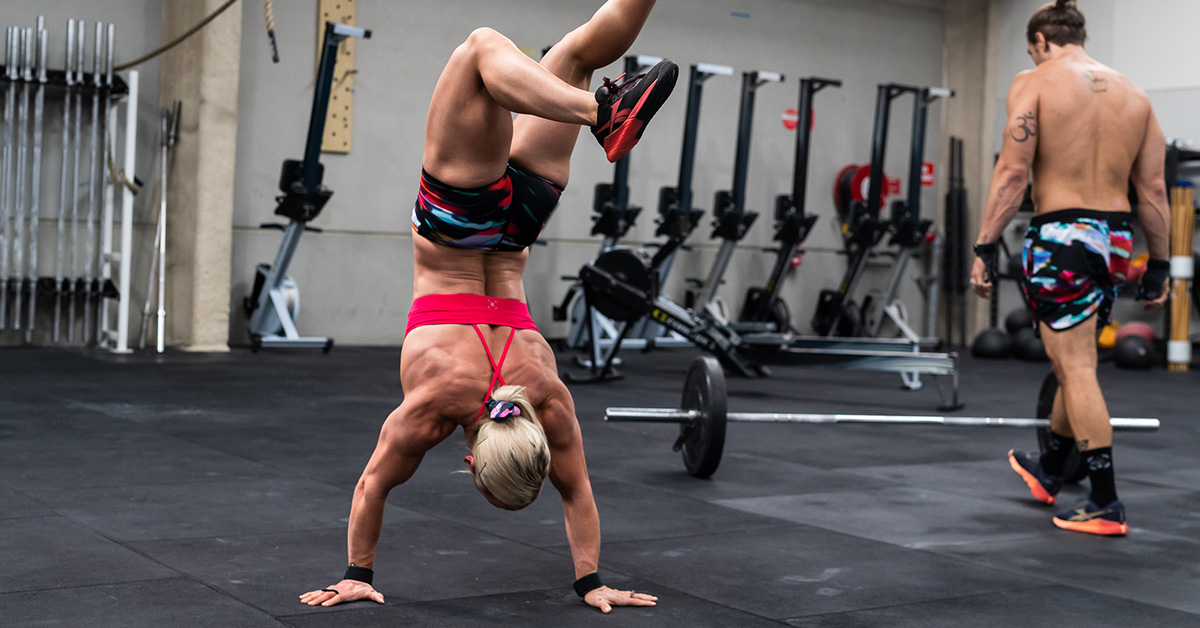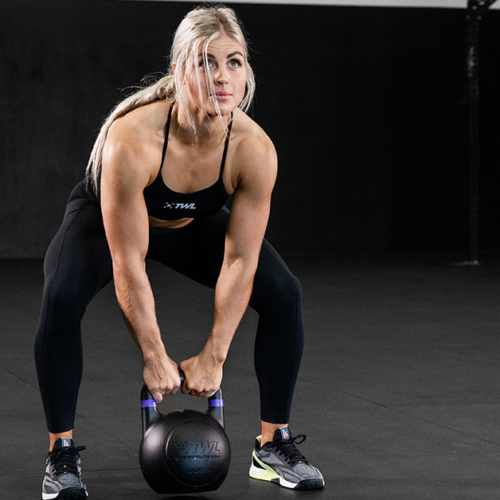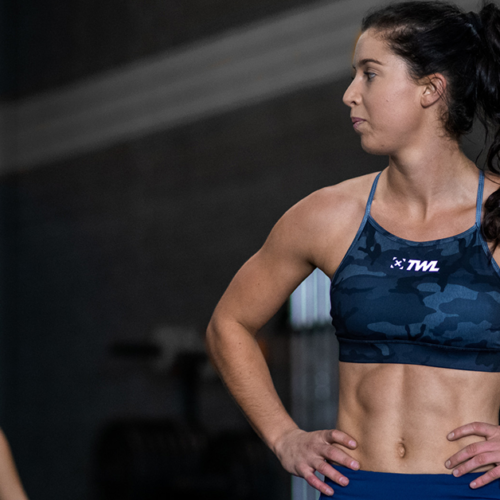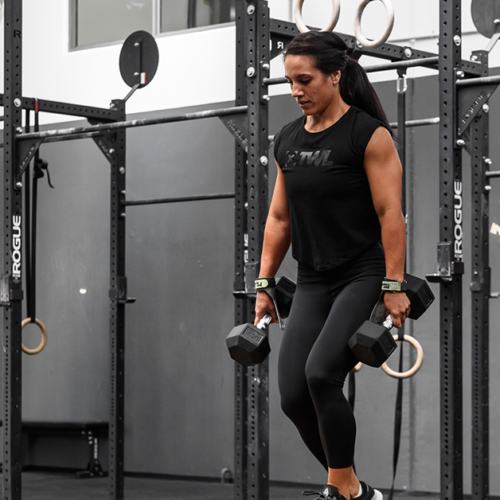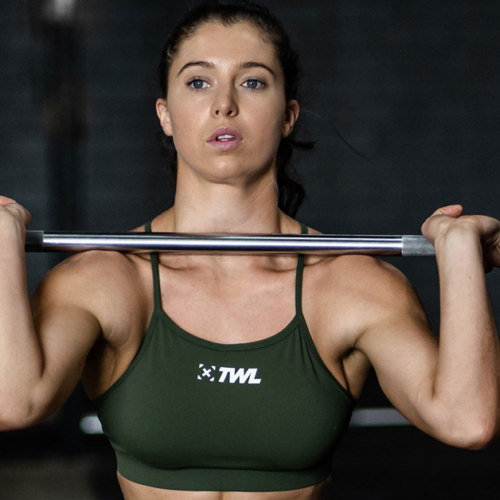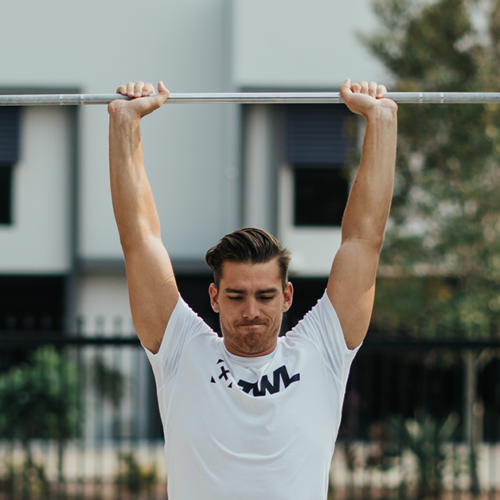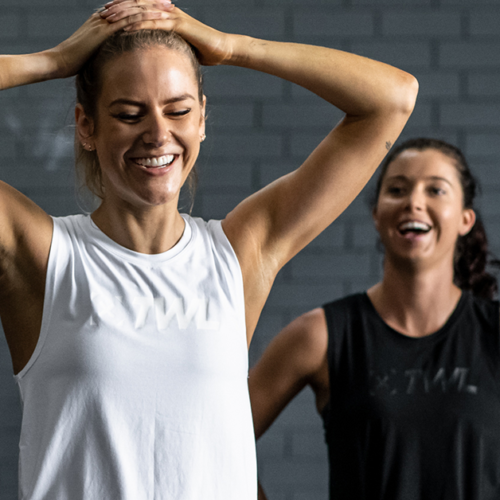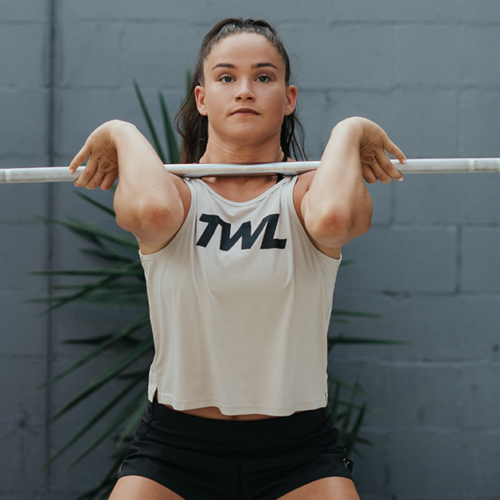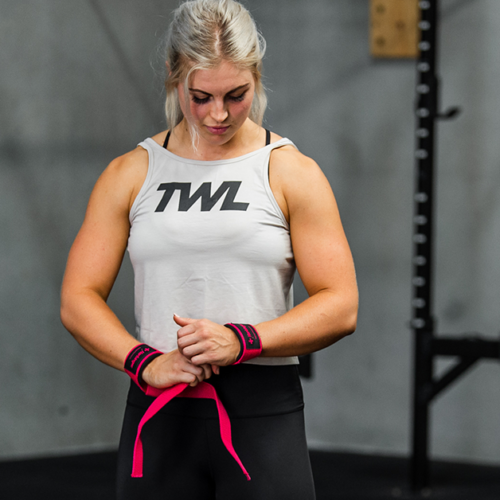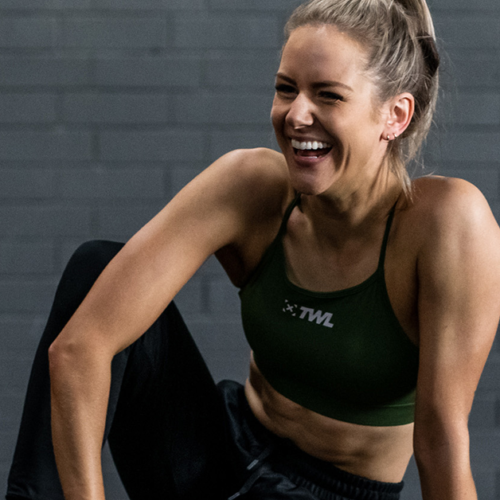Handstands holds are in most functional fitness athletes’ toolboxes. They build strength and stability and are a necessary step on your way to handstand push-ups, handstand walks, and a number of other movements. But how do you perform a handstand hold against the wall? What are some progressions and ways to scale it? And excitingly, how can you graduate to freestanding handstand holds?
Let’s go!
How Do You Do a Handstand Hold Against the Wall?
This is where it all starts. Almost all athletes begin practicing handstand holds using the wall as support. It helps you build not just the requisite strength and mobility but also confidence (which is a must for athletes who feel scared of handstands — totally understandable!).
To do a handstand hold against the wall, place your hands on the ground about a foot away from the wall. Then kick your feet up so that your body is in a handstand position, with your feet supporting you against the wall. Hold this position for several seconds before kicking back down.
Let’s break this down into more detailed steps:
- Place your hands on the ground about a foot away from the wall: This is a comfortable placement for most of us, but feel free to play around with it!
- Kick your feet up so that your body is in a handstand position against the wall: Some people do these first two steps in one fluid motion. Others like to get their hands situated and then kick up. Note that the former approach will give you a little more momentum.
- Hold the position: Start for just a few seconds at a time and work your way up. Being able to maintain this position for longer periods of time means that handstand walking and handstand push-ups will come a little easier to you later on.

6 Tips for Mastering Handstand Holds
It sounds simple enough. And in a way, it is. However, there are still smaller details of handstand holds that you need to be aware of. Here are a few tips to help you get the most out of your handstand holds against the wall:
- Start slowly and build up gradually: If kicking up is hard enough, then just practice that for now! (If this is you, then you might like our blog on handstand hold alternatives.) Once you’re more comfortable with this part of the movement, you can focus on standing on your hands for longer.
- Engage your core and glute muscles: A lot of athletes mistakenly think that handstand holds are all about shoulder strength. However, your core plays a huge role. Avoid letting it “sag.” In a handstand hold, your core — and glutes — should all be engaged. If your ribcage is sticking out, this is an indication that you’re not engaged!
- Keep your feet close together and pointed: Yes, your legs and feet matter. This is especially going to come into play once you’re ready to stop using the wall. So, practice it now.
- Make sure your hands are about shoulder-width apart and your fingers are spread wide: The more surface area your hands and fingers can cover, the more stable you’re going to be. Plus, once you’re ready to practice away from the wall, you’re going to use your fingers to help you balance.
- Use wrist wraps for additional support: They provide extra compression and keep the joint safe.
- Focus on your breath and stay relaxed: Tensing up your whole body and holding your breath will only make this feel more challenging. Stay engaged, yes, but relax and remember to breathe.
Shop Now
3 Benefits of Practicing Handstand Holds Against the Wall
By rehearsing handstand holds, you’re getting a lot of bang for your buck. It’s going to help you make gains with other things you do in the gym, including any and all overhead movements. There are many benefits to practicing handstand holds against the wall, including:
- Improving your balance and coordination: Because being upside-down is such an unnatural position, you’re going to take your sense of balance to a whole new level.
- Building strength and mobility in your arms, shoulders, and core muscles: Did you know that mobility plays a huge role in injury? And, shoulder injuries are all too common in functional fitness athletes. Handstand holds are an excellent way to keep your upper body mobile, flexible, strong, and sturdy.
- Increasing your mind-body awareness: Almost every inch of your body plays a role in handstand holds. Balancing on your hands isn’t easy, and it’s going to force you to pay much more attention to your body, balance, and center of gravity.
How to Scale to a Freestand Handstand
At some point, you’re going to be thinking, “Okay, I feel good against the wall! What’s next?” If you’re looking to up the intensity, you can kick things up a notch with freestanding handstands. This is where you’ll remove the support of the wall and hold the handstand position in the middle of the room. Sweet!
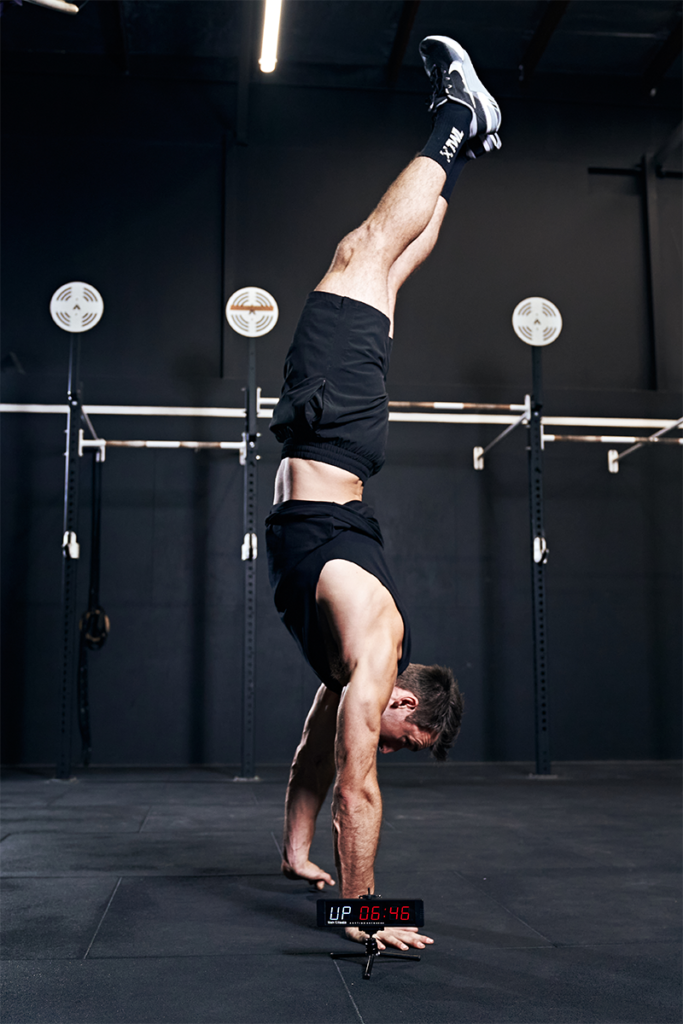
Psst! Be sure to check out our blog on handstand progressions.
Here are a few tips to help you nail the freestanding handstand:
- When you feel ready, move away from the wall an inch or two at a time. This way, if you fall, you still have the wall for support.
- Step away from the wall completely but have a friend spot you.
- Perform a wall walk to get into a handstand hold. This means you’ll be facing the wall. It’s an entirely different sensation and means you don’t have the support of the wall should your feet start to drift behind your head.
- Read our blog on handstands for beginners, because we have even more suggestions there!

